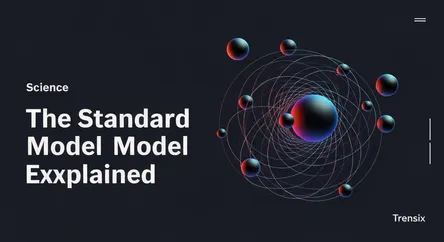Science
The Standard Model Explained

An overview of the Standard Model of particle physics, the theory describing the universe's most basic building blocks and fundamental forces.
What is it?
The Standard Model of particle physics is our best theory for understanding the universe's fundamental building blocks. Developed throughout the 20th century, it describes all known elementary particles and explains three of the four fundamental forces: the strong force, the weak force, and the electromagnetic force. It classifies particles into groups like quarks (which make up protons and neutrons) and leptons (which include electrons). It also includes force-carrying particles called bosons, such as the photon for electromagnetism and the gluons for the strong force. The famous Higgs boson is also part of the model, explaining how other fundamental particles get their mass.
Why is it trending?
The Standard Model is a highly successful theory that has precisely predicted the existence of particles years before their discovery, culminating with the confirmation of the Higgs boson in 2012. However, it remains a hot topic because it is incomplete. The theory doesn't include gravity and cannot account for major cosmic mysteries like dark matter and dark energy, which make up about 95% of the universe. These limitations drive physicists at institutions like CERN to conduct new experiments, searching for physics beyond the Standard Model.
How does it affect people?
On a daily basis, the Standard Model doesn't directly impact people in the way a new smartphone does. However, it provides the fundamental explanation for all matter and forces that govern our reality, from what makes the sun shine to how atoms hold together. The technologies that arose from the research into particle physics, such as medical imaging and accelerators, have practical applications. It is the foundation upon which our understanding of chemistry and the physical world is built, explaining the properties of everything we see and interact with at the most basic level.